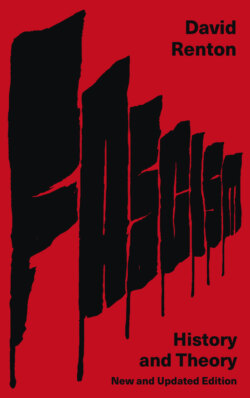Читать книгу Fascism - David Renton - Страница 10
На сайте Литреса книга снята с продажи.
Revolution and Counter-Revolution
ОглавлениеIn 1917–19, the soldiers’ and sailors’ mutinies that brought an end to the First World War pushed European society to the left. There were revolutions in Russia, Hungary and Germany, and across Europe there were mass strikes. In Italy, 1919 and 1920 were known as the Biennio Rosso, the two Red Years. In Turin, armed workers set up factory councils. In September 1920, when engineering employers called a lock-out, half a million workers took control of their factories.39 Without appreciating the extent of the revolutionary fervour of 1919–20, it is impossible to understand how it was that fascism could grow afterwards.40
In Germany, as in Italy, the end of the war was followed by a period of revolution. Throughout 1918, there were repeated mutinies in the German armed forces. In November 1918, a revolt in the naval barracks at Kiel sparked the formation of sailors’, soldiers’ and workers’ councils, which spread through the northern ports and inland to Berlin. On 9 November, this mass movement forced the Kaiser to abdicate. In January 1919, there was a failed revolt in Berlin, the ‘Spartacist Days’. In April, Bavarian leftists formed a Soviet Republic, although it was crushed the following month. In 1920, a general strike in Berlin stopped an attempted coup led by Wolfgang Kapp, a civil servant and right-wing journalist. In summer 1923, as the mark collapsed, miners, steel workers, Berlin metal workers and printers all took part in huge political strikes against the government. Workers formed proletarian hundreds, armed guards, as the first step towards a left-wing insurrection. The Communist Party vacillated and then shelved its plans; thus, as it had been in Italy, the opportunity was lost.41
The question of the relationship between fascism and counterrevolution has repeatedly divided historians. It was posed starkly during the German ‘historians’ controversy’ (Historikerstreit) of 1986–7, in which a key part was played by Ernst Nolte, a historian of ideas, who had worked for many years on questions of politics and philosophy before becoming a historian. Nolte’s previous 1963 book, Der Faschismus in seiner Epoche (published in English as Three Faces of Fascism) had been a considerable publishing success and is of lasting value. It sought to interpret fascism through the works of the left-liberal novelist Thomas Mann, and through Mann’s insight that the 1930s had been an ‘age of fascism’ in which powerful historical forces had converted the authoritarian right into fascism. Twenty years later, as Nolte had become older and more partisan, he was looking for a rhetorical device which could liberate Germans, and especially German conservatives, from their association with Hitler’s atrocities. Nolte’s solution was to argue that Nazism had been a response to the revolutionary excesses of the political left. Had it not been for the threat of a German revolution, there would have been no counter-revolution. It followed that the people who deserved the blame for the Holocaust were not the Nazis, nor the conservative politicians who invited them into power, but the Russian revolutionaries who had diverted interwar Europe from its likely path of peace and social calm.42
Nolte himself was widely criticised during the Historikerstreit and there have been very few writers who have followed him since. But one premise of his approach which has been attractive to a wider group of historians is the idea that fascism was a politics of counter-revolution, the revenge in other words of those who had been defeated during the 1917–18 revolutions in Russia and Germany.
The Marxist writers of the interwar years come close to this insight. The speed with which Italy went over from revolution to fascism makes this approach, or something like it, almost inevitable. But, even in Germany, the dynamics were different. The spirit of revolution had been at its height in 1919 or 1923, it had been waning for years by the time of Hitler’s victory.
For the interwar Marxists, the most obvious forms of counterrevolution could be seen in those postwar countries where a revolution had been defeated but otherwise society continued along previous lines. Fascism, Zetkin explained, had a different programme. It mobilised different people to more ambitious ends. Zetkin cautioned against comparing the fascists to such forces as the Horthy regime in Hungary. That had been a military response to that country’s Soviet Republic. It was anti-liberal, and had an uneasy alliance with right-wing paramilitaries. Elections were held, albeit Communists were banned and trade unions subject to police supervision.43 Horthy’s government ‘was established’, Zetkin wrote, ‘after the short-lived revolution of the proletariat had been supressed and was the expression of vengeance of the bourgeoisie’. Fascism, by contrast, ‘is not the revenge of the bourgeoisie … The fascist leaders are not a small and exclusive caste; they extend deeply into wider elements of the population.’44
